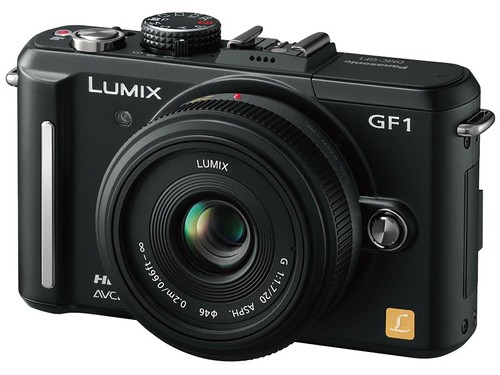David Pogue, my favorite tech reporter reviews 2 new cameras models that merges two different worlds:
- The big SLR cameras that takes great pictures.
- The small and portable digital cameras.
The Canon PowerShot S90 and Panasonic Lumix GF1 offer us:
- Small enough for a pants pocket. (Canon S90)
- A big sensor. (Canon S90, Panasonic Lumix GF1)
- Superfast start-up. (Canon S90, Panasonic Lumix GF1)
- No shutter lag, the annoying delay after you press the button. (Panasonic Lumix GF1)
- No blur in low light. (Canon S90, Panasonic Lumix GF1)
- Huge digital screen.(Canon S90, Panasonic Lumix GF1)
- Image stabilization. (Canon S90, Panasonic Lumix GF1)
- Face recognition for perfect portraits. (Canon S90, Panasonic Lumix GF1)
- The ability to take RAW photos (a format beloved by photographers because it lets them, in effect, change camera settings after the fact, using Photoshop).
- Excellent burst mode, 5 shots a second. (Panasonic Lumix GF1)
- HD Hi-def video capture. (just the Panasonic Lumix GF1)
- Low price. (just the Canon)
A big sensor is a great advantage because it’s the single most important determinant of photo quality. A big sensor generally means better color and clarity, and less grain and blur in low light. SLR cameras have enormous sensors, which is why professionals use them. But SLR’s are also enormous cameras, which is why 92% of consumers still buy pocket cameras.
Prices
- Canon PowerShot S90 ($412)
- Panasonic Lumix GF1 ($870)
Canon PowerShot S90
Canon’s S90 doesn’t offer SLR quality photos, but it comes closer than any pocket camera ever has, because of three advances.
First, it’s got a big sensor: 0.59 inches diagonal, 37 percent larger than most pocket cams. And it’s only 10 megapixels, so each individual light-sensing pixel is much larger, for better light-gathering ability. (In fact, the S90 has the same sensor and electronics as the much bulkier Canon G11.)
Second, the S90 has an eyebrow-raising f/2.0 lens. It lets twice as much light through the glass as most pocket cameras.
Third, the S90 has a big clicky ring around its lens barrel, which lets you make quick photographic adjustments without burrowing into menus. Which adjustment? That’s up to you, it is customizable. With one button press, you can redefine the ring’s function: zoom, manual focus, exposure adjustment, white balance, ISO (light sensitivity), shutter speed or aperture. You can turn the dial, snap, turn some more, snap, and never take your eyes off the screen, learning all the way.
Now, like all pocket cameras, the S90 has a tough time creating that sharp-subject, blurred-background effect that’s such a hallmark of professional SLR photography. And, for some reason, the S90 can’t capture HD video-only standard-definition.
This camera takes better photos than any other pocket camera on the market.
Panasonic’s Lumix GF1
Panasonic’s Lumix GF1 has been available for a whole year now. That pocket camera introduced much of what makes the Canon special: the f/2.0 lens, the big sensor (0.61 inches), RAW-format images and so on. But the GF1 also captures movies in HD and has a hot shoe where you can attach an external flash. The photos are generally terrific.
The GF1 is the world’s smallest interchangeable-lens flash camera. It fits in a coat pocket even with its 3X zoom lens. (You can also get it with a nonzooming 20-millimeter lens that adds no depth to the body.)
The GF1’s 0.89-inch sensor, still isn’t the size of an SLR so it still doesn’t have quite the same light sensitivity. It focuses fast but not instantaneously, as an SLR does. And there are still only six Micro Four Thirds lenses so far.
And the GF1 is a hi-def video superstar. It can change zoom and focus while you’re shooting video, something SLRs can’t do, although the refocus takes a second or so. Videos aren’t length-limited, either; you could record the entire school musical on, say, a 16-gigabyte memory card. And there’s a dedicated record button, so you never have to change modes to flip between stills and videos. That is an interesting usability advantage.
At the end both cameras are great and were necessary for several years before, I ‘am glad they ha appeared.


Performance is merely average; no HD movie mode or optical zoom while recording; no optical viewfinder and a couple other design miscues.